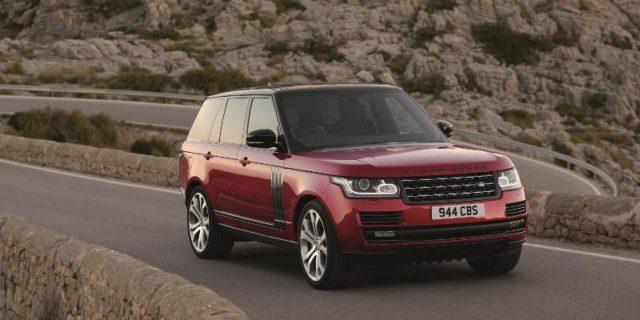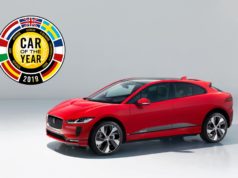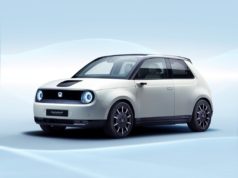Two minutes is not long, but it’s enough time for Land Rover to celebrate a motoring icon. The Range Rover has pioneered design, refinement and engineering innovation since 1970. Land Rover has showcased the evolution of its luxury SUV through four generations with a unique animation. The clip lasts only 120 seconds.
The specially commissioned visual has been created to mark key dates in the history of the legendary SUV. Production of the original two-door model ended 23 years ago this month (January). Meanwhile SVAutobiography Dynamic goes on sale around the world.
The detailed animation shows how today’s Range Rover retains many of the design hallmarks established by the 1970 Classic. The culmination is the arrival of the latest derivative, SVAutobiography Dynamic.
Range Rover has evolved into the world’s most elegant and sophisticated SUV. Trademark features including its ‘floating’ roof, distinctive clamshell bonnet, continuous belt line and practical split tailgate all pay homage to the groundbreaking original.
The Range Rover story begins with the 26 pre-production models, which wore Velar badges in an effort to hide its identity. Velare means to ‘veil’ or ‘cover’ in Italian. The name was made up of letters from the ‘ALVIS’ and ‘ROVER’ badges that usually adorn the front and rear of a vehicle. Range Rover development engineer Geof Miller used the name as a decoy, because he wanted to register pre-production Range Rovers. The Velar company was registered in London and produced 40 pre-production vehicles built between 1967 and 1970. Most of these Velar pre-production vehicles survived, while some of them are preserved and/or restored.
Gerry McGovern, Land Rover Chief Design Officer, said: “Range Rover has, over time, achieved iconic design status through a progressive evolution of its unique DNA, culminating in a vehicle of peerless distinction. From its sense of evolution and sophisticated sensibilities inherent in its interior design to its understated yet powerful exterior proportions, Range Rover stands alone. There’s simply nothing else like it.”
When it was first launched in 1970, Range Rover was one of the first vehicles to deliver permanent all-wheel drive
The first-generation production continued between 1970 and 1996. It was available only in a 2-door body until 1981, though prior to this specialist firms produced 4 door models.
In 1971 the definition of the original model was ‘an exemplary work of industrial design’. It became the first vehicle on display at the Louvre museum in Paris. The car is at the forefront of design and engineering innovation ever since.
The four-door variant came in 1981. The first application of an automatic transmission in Range Rover followed in 1982. In 1989 the luxury SUV was the first 4×4 with anti-lock brakes (ABS). And in 1992 it became the first SUV in the world with electronic traction control and automatic electronic air suspension.
The engineering firsts continued in 2012, when Range Rover was the world’s first all-aluminium SUV. In 2014, the luxury SUV was the first vehicle to employ Land Rover’s advanced semi-autonomous All-Terrain Progress Control (ATPC) technology. ATPC allows customers to set and maintain a desired speed from 1mph to 19mph (1.8km/h to 30km/h) without using the pedals. The clever set-up continuously monitors and adjusts the vehicle settings to optimise traction. It helps customers negotiate challenging terrain by maintaining composure, while allowing the driver to concentrate solely on steering.
The last model included in the animation is the SVAutobiography Dynamic, which shares its V8 engine with the acclaimed Range Rover Sport SVR (680Nm of torque and 0-100km/h (0-62mph) in only 5.4 seconds). Interior enhancements deliver elevated refinement and desirability.
Since its launch 48 years ago Land Rover’s flagship has achieved more than 1,700,000 sales across the globe. The legendary SUV has unrivalled breadth of capability and elegance, which make it a favourite of royalty, business leaders, politicians and celebrities.

































